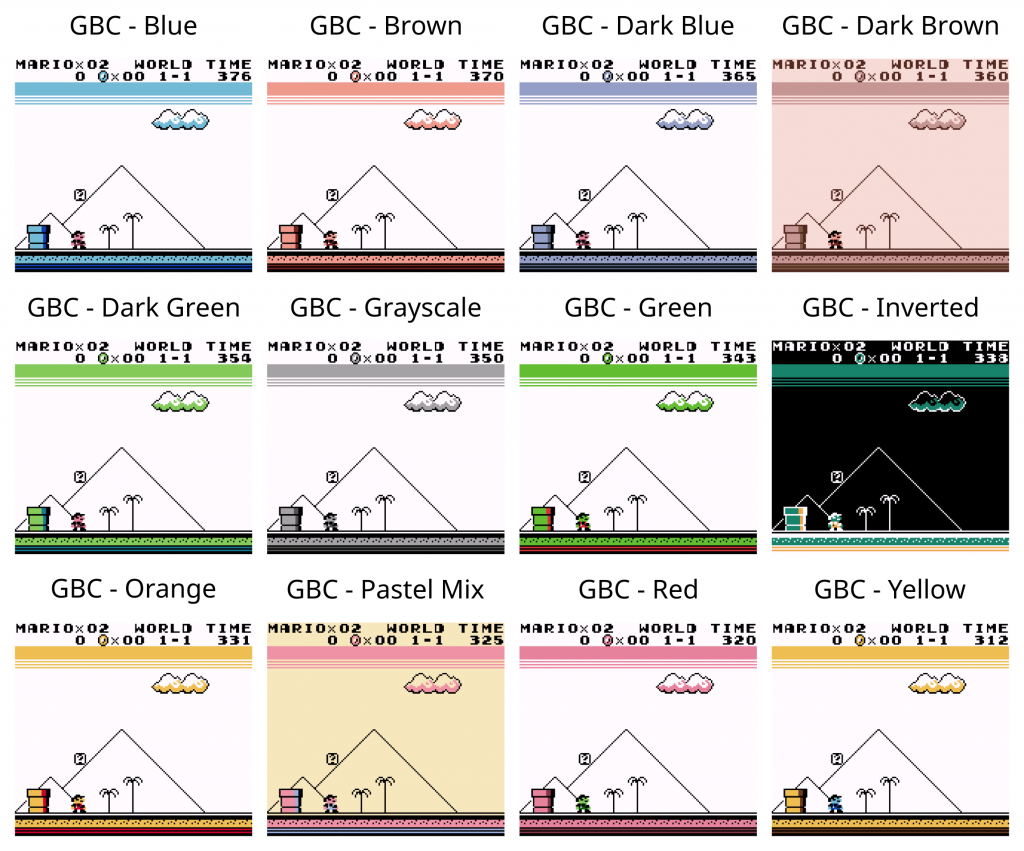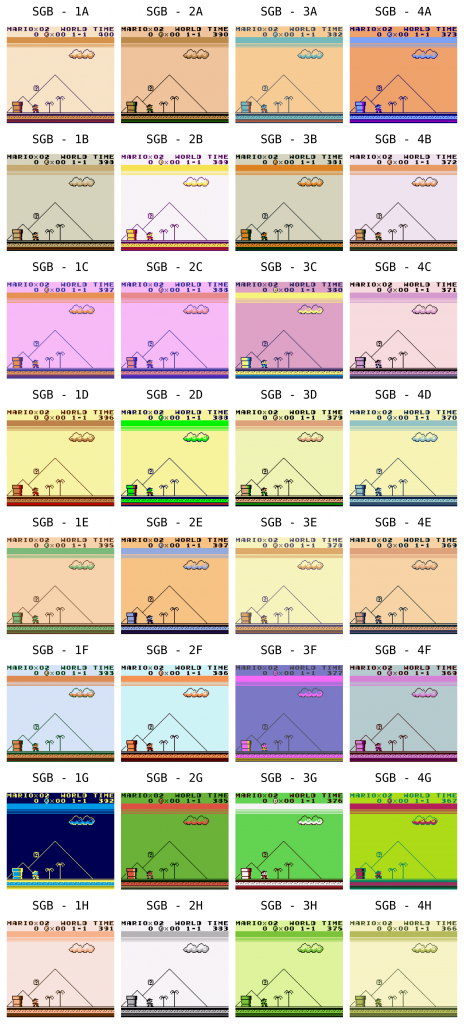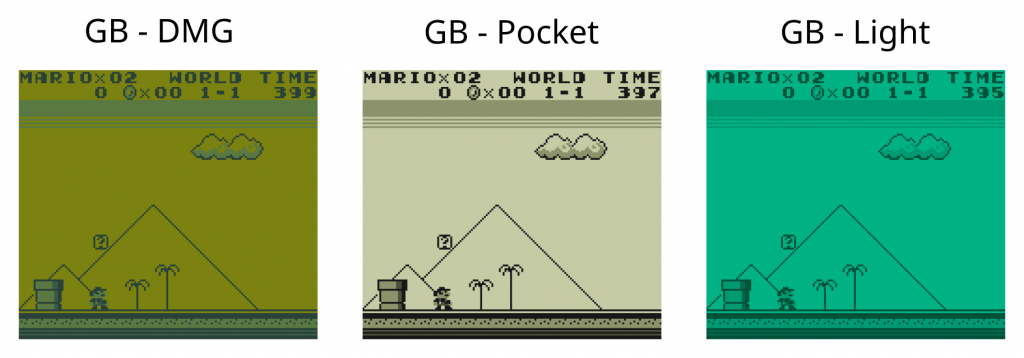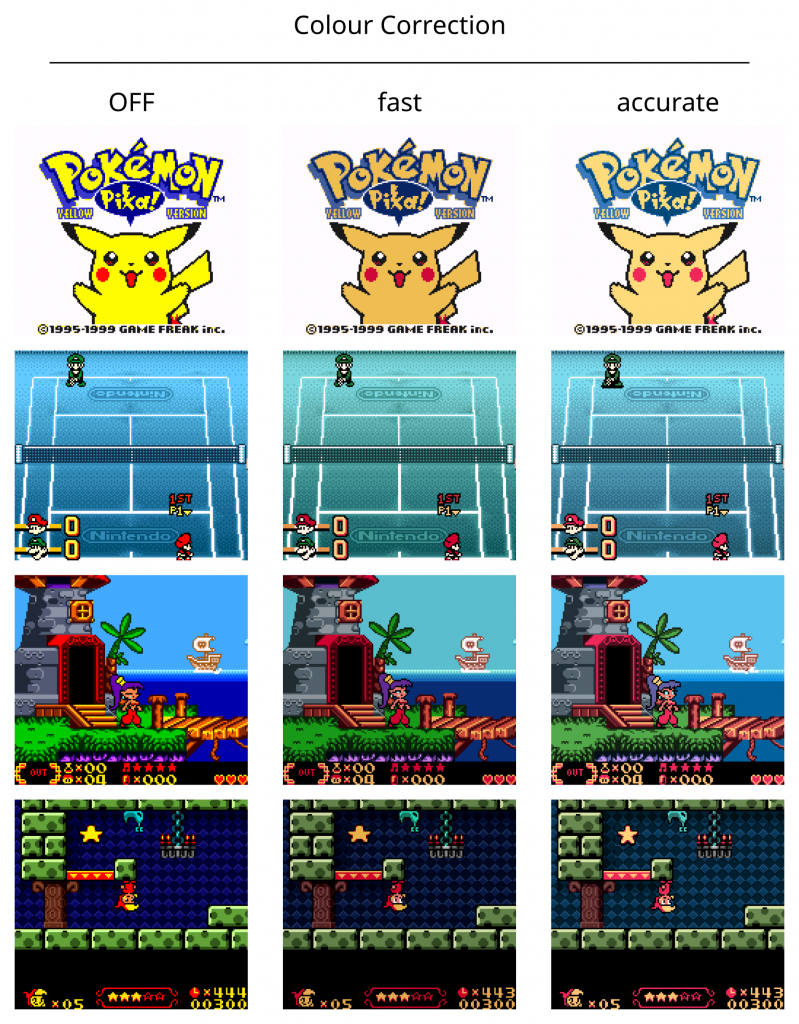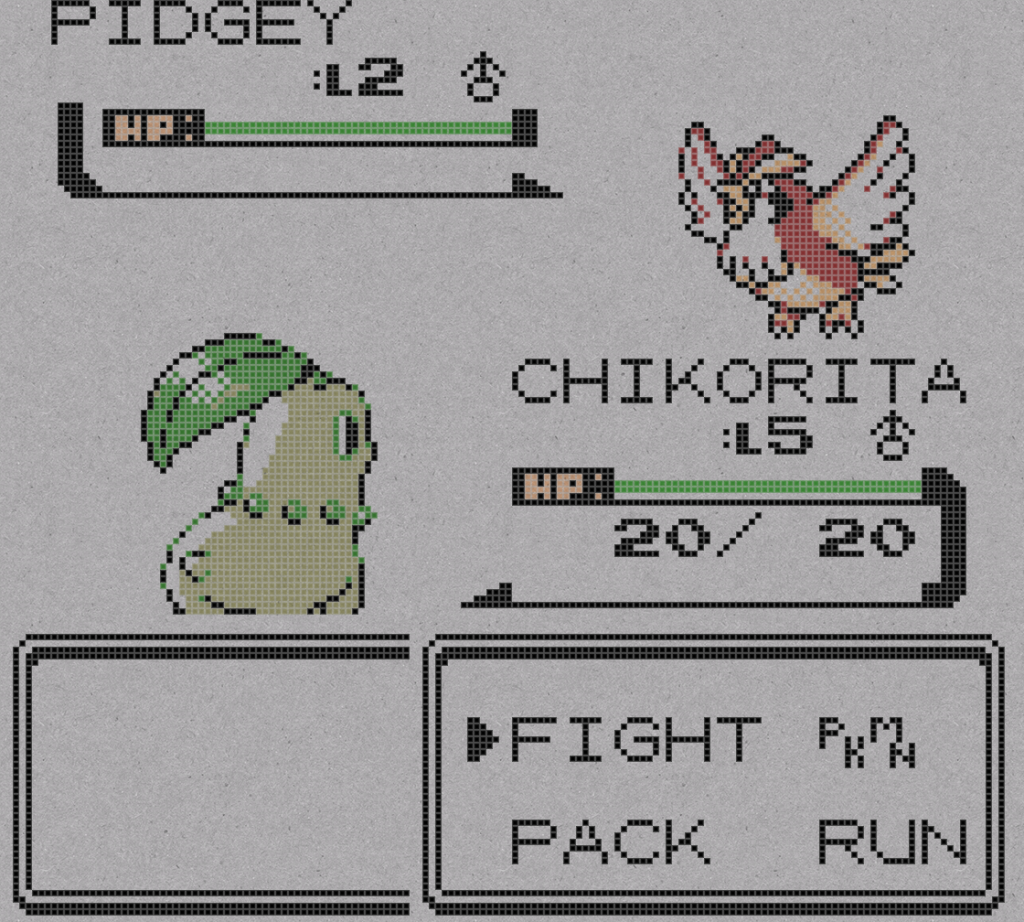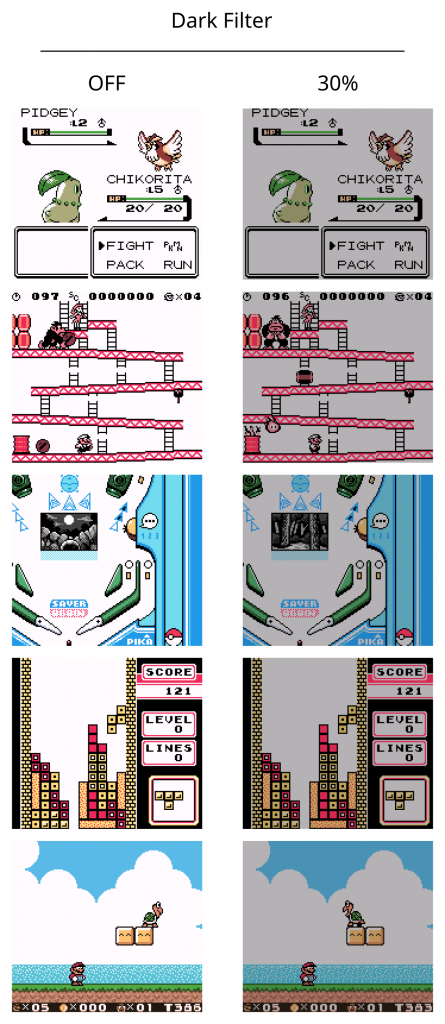Our last core progress report was on February 5, 2020. Below we detail the most significant changes to all the Libretro cores we and/or upstream partners maintain. We are listing changes that have happened since then.
How to update your cores in RetroArch
There are two ways to update your cores:
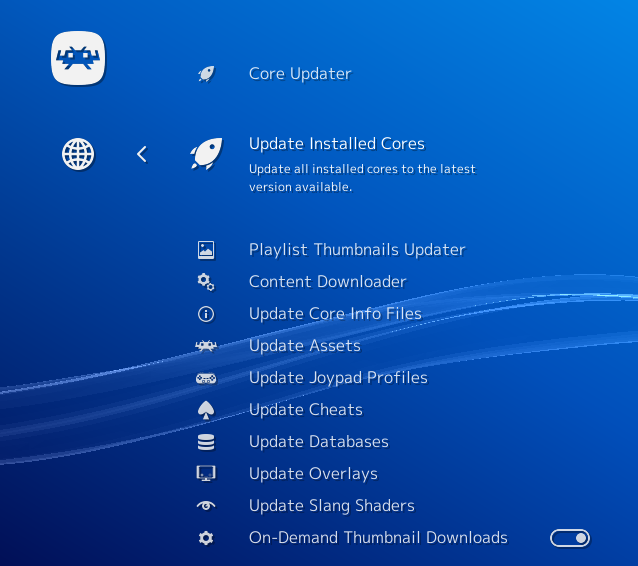
a – If you have already installed the core before, you can go to Online Updater and select ‘Update Installed Cores’.
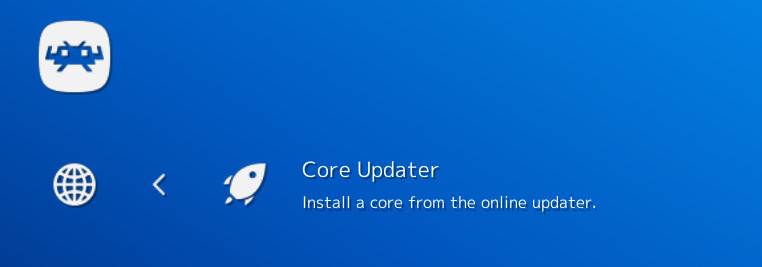
b – If you haven’t installed the core yet, go to Online Updater, ‘Core Updater’, and select the core from the list that you want to install.
Vitaquake 2
Description: Quake 2 game engine core
Vitaquake 2 is now available for the first time on 3DS and Android. It uses the software renderer on those platforms for now.
- Bugfix: Analog input descriptors added
- Bugfix: Actually exit on Sys_Quit and Sys_Error. They intend to exit. Not doing so only result in weird crashes later
- Bugfix: Fix crash in soft renderer when going underwater on increased resolution
- Port: Ported vitaQuake 2 core to 3DS (software renderer only).
- Port: Ported vitaQuake 2 core to Android (software renderer only).
- Softrend: Fix crash in soft renderer when going underwater on increased resolution
ECWolf
You’ve been able to read about the new core ECWolf in our separate blog article. Further developments since then have been a 3DS port and analog deadzone options.
- Analog deadzone options
- Port: Ported ECWolf to 3DS
TIC-80
Description: TIC-80 emulator core
- Updated to latest version
Flycast
Description: Sega Dreamcast emulator
We reported before in two separate articles this month on the mipmapping accuracy improvements. There have been other developments since the last progress report –
- x64 DSP JIT support – audio DSP enabled should now have far less overhead than before
- users now cannot force enable div matching [flyinghead]
- disable div matching for Donald Duck Goin Quackers [flyinghead]
- (NAOMI) parent rom name was incorrect for GDROMs [flyinghead]
- (NAOMI) add ringout eeprom + some crcs [barbudreadmon]
Picodrive
The fast tile-based renderer (a new addition) can give a very welcome increase in performance. Note that only the ‘accurate’ renderer will display any graphics with 32X-based games, so only use tile-based rendering for now with regular Genesis/Mega Drive games.
- Added an option to change the renderer from the default “accurate” line-based renderer to an alternative “fast” tile-based renderer, which may improve performance on slower devices such as the PSP. [bmaupin]
gpSP
- Fix periodic ram_translation_cache crashes
- Add manual frame skipping
OpenLara
- Fix Android compilation [phcoder]
Despite what the comments say Openlara uses
functions available only in glesv3. Hence we need to
force GLES3 and not GLES2. Then we need to fix compile error.
It was due to requiring too low version of Android before it
had GLESv3
prBoom
We talked about the serialization support before in prBoom. New improvements since then is that the wiggle fix is finally fixed now for ARM-based platforms like Android and iOS. Previously you’d need to have Wiggle Fix turned off if you didn’t want the floors and ceilings to look glitchy.
- Implemented serialization support. Rewinding and runahead has been tested.
- Use fixed point in precise flat calculation. This should work well now also in ARM and other platforms
- Fix double free on failed load
DOSbox SVN/Dosbox Core
- Latest SVN updates
Final Burn Neo
- Latest updates from upstream
Stella
- Latest updates from upstream
PCSX ReARMed
The biggest improvement since the last progress report [and the articles that followed it] definitely has to be runahead second instance support.
- [3DS] Tweak compile-time options to increase performance [justinweiss]
Adjusting a few things in the makefile to get some easy performance boosts.Did some measurement with Crash Bandicoot idling on the beach he starts on in Crash 1. All of these together brought it from ~44.5 fps to ~50.9.
Tried all four UNAI options, this was the fastest by ~0.5fps.
- [3DS] Fix dynarec crashes [justinweiss]
After the dynarec writes new instructions, it has to flush the
instruction and data caches. Some of these flush operations are
privileged on the 3DS, so the clear cache functions have to run
through svcBackdoor. The Nintendo implementation (and CFW
reimplementation) of svcBackdoor has a problem where interrupts and
context switches will cause crashes.Even though we can disable interrupts in the flush function, there’s
still a window of time between svcBackdoor being called and the
function being run where an interrupt will corrupt the stack.Luma3DS implemements a svcCustomBackdoor call we can use that also
runs a function in supervisor mode, but uses an implementation that
avoids this problem. - Fix second instance runahead [ZachCook]
Beetle PSX
Some crucial accuracy improvements to the hardware renderers means that Gran Turismo 2 is finally glitch-free with both OpenGL and Vulkan. Before, the HUD and other parts of the screen would flicker during gameplay.
- Separate lightrec PGXP and non-PGXP rw_func [ZachCook] –
When tested with soul blade this increases dynarec performance by ~1%
for non-PGXP, and ~2% for PGXP as it always uses rw_func due to the fast-path
being disabled for it. - Add frame duping support to RSX Vulkan [ggdrt]
- OpenGL: Eliminate redundant glClear call [ggdrt]
- Add accurate timing macros and report noninterlaced by default
- Vulkan: Delay VRAM framebuffer size calculation to latest possible moment in
Vulkan renderer; don’t rely on external timing of UpdateDisplayMode. - Add GP1(05h) command to rsx and parallel-psx [ggdrt]
- Vulkan: Add Display VRAM core option support [ggdrt]
- parallel-psx/Vulkan: Decouple MDEC and SSAA filter logic [ggdrt]
- Limit image_offset range to prevent segfault [ggdrt] –
Also update image_offset formula to better match core option info
- Update rsx hook sequence in GPU reset and GPU restore state [ggdrt] –
Fixes hardware renderer glitch where a portion of the BIOS PS logo would
briefly flicker into the bottom right corner of the viewport after the
normal BIOS animation. - Make scanline core options dynamic for sw renderer [ggdrt]
Desmume 2015
- Blank screen gap for non-hybrid modes [Exalm]
- Account for screen gap for touch input in top/bottom mode [Exalm]
mGBA
- 3DS: Fix build
- Update to mgba 0.8.1
Quasi88
- Fix -mem_wait audio distortion
Occurred when running in mode V1S
due to front-loading DMA waits on
each vertical sync. -
ParaLLEl N64
We’ve run several stories on ParaLLEl N64 this month already. In addition to the changes listed here, an Angrylion VI performance enhancement has been implemented which makes the VI filtered modes have less overhead than before.
- Fixed VI performance issue caused by false sharing
As pointed out by Themaister, the rseed array in vi.c suffers from false sharing, since its element size is smaller than the cache line size.
This improves VI performance by no less than 30%. [Themaister/ata4]
P-UAE
Description: Commodore Amiga emulator
This core is fast becoming one of the best ways to emulate the Amiga courtesy of sonninos.
- Extended ZIP support [sonninnos]
- WIIU build fix attempt + option display fix [sonninnos]
- WHDLoad.hdf as raw files, Keylist fix, 68020 back to defaults [sonninnos]
- Allow launching directories as hard drive images [sonninnos]
- Save state fixes [jdgleaver]
- Use memory-based save states (serialization support)
- Reverted 68020 CPU shenanigans, Minor font fix, Less logging clutter [sonninnos]
- New VKBD+statusbar fonts, RetroPad + CD32 Pad face button options [sonninnos]
- Separate resolution & line mode core options, Automatic line mode [sonninnos]
- Automatic resolution, Deinterlacing fixed, Statusbar fillings [sonninnos]
- WHDLoad.hdf update [sonninnos]
- Analog joystick device + minor reorganizing [sonninnos]
- Resolution changing without reset [sonninnos]
- Filesystem fixes
- Model options for A4000, 68030+68040 [sonninnos]
- “gl” video driver max_width fix [sonninnos]
- Readme + core option label updates & ‘vsynctimebase’ tuning [sonninnos]
- SuperHires video resolution & glue organizing [sonninnos]
ScummVM
- Update to ScummVM 2.1.1
Opera (formerly 4DO)
Description: 3DO emulator core
Genesis Plus GX
Description: Sega Genesis/Mega Drive/Master System/Game Gear emulator
- Android: Add OPLL sound core
FCEUmm
Description: NES emulator core
NOTE: All changes courtesy of negativeexponent (unless expressly attributed to somebody else)
- Do overscan cropping after the ntsc frame is generated. this allows
removing left and right screen artifacts when using horizontal crop like
what you would see happen in TV when adjusting horizontal size (HSIZE). - add core option that implements NTSC scanline effects. This requires
framebuffer to double the height, so a define is added (NTSC_SCANLINES at
the top of libretro.c) to disable this on some low-memory platforms or just disable NTSC filters altogether. - Mapper 235 update support for 1MB/2MB carts and cart with unrom block
- CNROM: Minor database cleanup
- Use existing crc32 database for Bingo 75 (Asia) (Unl), this moves checksum check on mapper side instead of unif overrides.
- m269: Deallocate memory on exit
- Update mapper 15 based on latest notes
– bit 7 acts as A13 only on mode 2
– prg mask now 0x3F of data latche etc.
– unrolled loops - Merge mappers 225 and 255 since they are basically the same
- re-implement extra RAM as its required for some multicarts
- Fix colour emphasis support for NTSC filter & raw palette + nes decoder shader
– this implementation is based on a more accurate colour emphasis from fceux.
– The raw palette + nes decoder shader was kinda incomplete since the implementation was based on
a per-frame basis which means that the emphasis bits were read once and applied to the whole frame. This
means that some games that uses a per pixel or per scanline emphasis would not appear correct. The more
accurate implementation reads emphasis bits from bits 5-7 of PPU[1] and saves this info in a separate frame.– The same implementation is also used to fix emphasis for the ntsc filter.
- Fix palette for vs. system
- use fixed value for ntsc width and when its cropped
- Fix colour emphasis when using palette presets –
This is an issue i found when implementing the NTSC filters. Currently when using palette presets,
no clour emphasis is seen on games that supports it. This is cause because the palette table is
fille with the same 64*3 colour info.Using custom palette (palette file) and default both creates the emphasis as expected. So internally,
fceumm is able to support such feature.The fix is to generate the base palette (64 * 3 with each triplet representing rgb colour), and then
send this internally using FCEUI_SetPaletteArray() to fill the colour table with emphasis instead. - (3DS) Disable NTSC filter [jdgleaver]
- (Android) Add NES NTSC filters
- Implement blargg NTSC filters –
– this implements blargg’s nes ntsc filters using core options
– an optional height doubling is also added but disabled for performance reasons (might make that optional as a core option)
– since PS2 and PSP have their own blitter branches, these platforms do not have the ntsc filters since i dont have the means to test on those systems.
– compile with HAVE_NTSC=1 to have these options, HAVE_NTSC=0 disabled filter including core options
– HAVE_NTSC=1 is set as default, other than PS2 and PSP as stated above. - Add mapper 218
- m227: Implement chr-ram write protect
- Add UNIF BMC-WX-KB4K (m134) to supported boards
- Fixed VI performance issue caused by false sharing
- Update mapper 91
- Add mappers 111, 356, 269, 353
- backport mapper 111 (Cheapocabra or GTROM) from fceux
- Add BMC-SB-5013 (m359) and UNL-82112C (m540)
- Add mapper 543, 550, 516
- MMC1: Better work ram and battery saves support for size greater than 8K
- Add mappers 382, 534, 539
- Update mapper 150/243 (unif UNL-Sachen-74LS374N)
- Update mapper 45 –
– fix starting register value
– fix memory write range to 0x6000-0xffff - Add mappers 360, 533
- Minimize core options shown by default
- updates to region-related settings and overclocking, UNIF now sets ines mapper if available (used for overrides etc)
- Unif: Pass iNES mapper number to cart struct when available
Update implementation of some unlicensed mappers
Gambatte
Description: Game Boy/Game Boy Color emulator
- Add optional LCD ghosting effect –
This backports the LCD ghosting effects that were recently added to mGBAIt replaces the existing Mix Frames core option with Interframe Blending. The old Accurate and Fast frame mixing settings have been renamed to Simple (Accurate) and Simple (Fast) – these perform the same 50:50 mix of the current and previous frames as before, required to achieve correct rendering of games that rely on LCD ghosting for transparency effects.
In addition to these settings, there are now LCD Ghosting (Accurate) and LCD Ghosting (Fast) options. The former recreates the LCD response effect of RetroArch’s Gameboy Shader. The latter is similar, but uses a single accumulation buffer – which is more efficient, but lacks the subtlety of the shader implementation.
Here are some stats showing the typical increase in performance overheads when using the various methods:
Simple (Accurate): 30%
Simple (Fast): 13%
LCD Ghosting (Accurate): 48%
LCD Ghosting (Fast): 28% - Do not add pointers to memory map if they are not available –
skips sram when no sram is available
skips extra RAM banks if not running in GBC mode - tvOS support
Pokemini
- Safely power off console before closing content [jdgleaver] –
Thanks to the efforts of @Sanaki, it was discovered that certain games do not correctly update their EEPROM save data unless the virtual Pokemon Mini console is powered off before closing content. Affected titles include Pokemon Pinball Mini and Pokemon Race Mini – up until now, it was generally thought that saving was completely broken in these games.This PR adds an automatic power off event to retro_unload_game(). This ensures saves are always written without any special intervention from the user.
The issue has existed forever, and I believe it affects the standalone version of PokeMini as well – great to finally get this fixed!
EasyRPG
- Fix Android build
Kronos
Description: Sega Saturn emulator based on Yabause
- Latest updates by F-Care
VICE
Description: Commodore 64 home computer emulator
Statusbar stays at the screen border + new position options: Top or Bottom
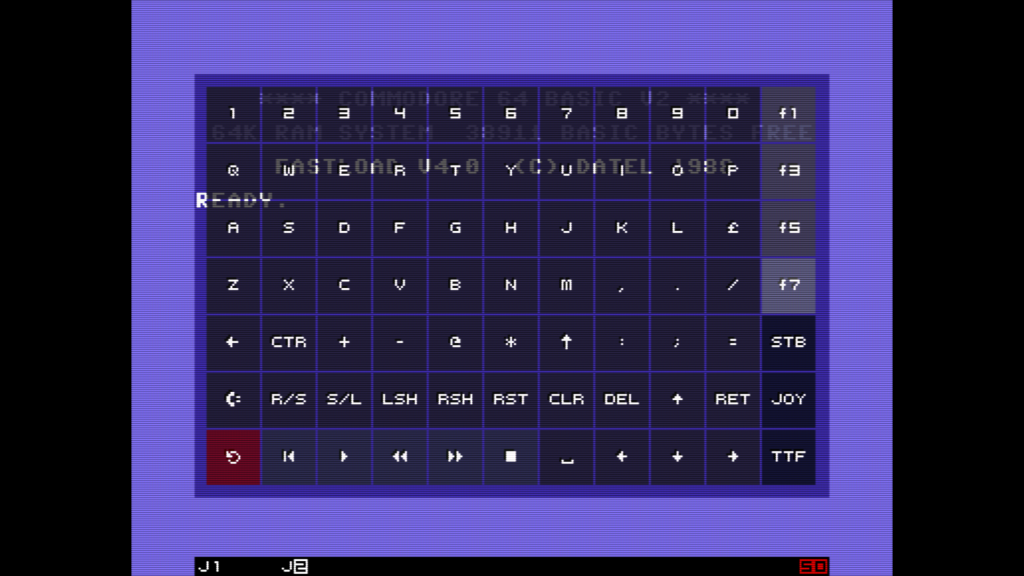
RetroPad face button options: Rotate, Jump, Rotate+Jump
Mouse type core option, usable with D-Pad + left analog + mouse, covered at least:
Arkanoid (Paddles port 1)
Arkanoid 2 (1351 port 1)
Maniac Mansion Mercury (1351 port 2)
Speeds are vastly different in Arkanoid & Maniac Mansion, so it was impossible to have both cases perfect with default options. VICE allows only one potentiometer device at a time, therefore it applies to the current RetroPad port. Pretty much everything else is familiar stuff from the PUAE core.
Bonus:
Defaulted ReSID sampling to “Fast” on low-power platforms
Minor reorganizing
- Mouse support [sonninnos]
- RetroPad face button options, More statusbar options [sonninnos]
- New fonts + cleanups [sonninnos]
Final Burn Neo
Description: Multi-system arcade emulator core
- Latest updates

